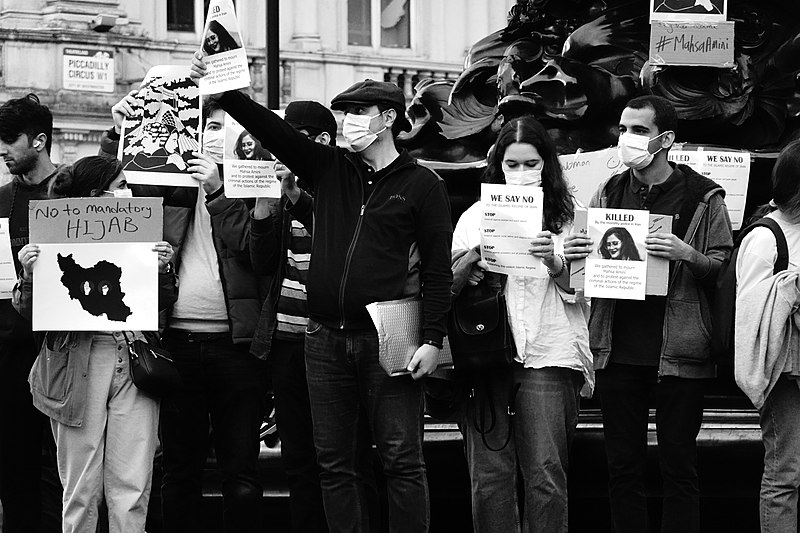History department shows Iranian horror movie amidst protests
Photo courtesy of Wikipedia Commons
Photos taken at a protest at London’s Piccadilly Circus against mandatory hijab in Iran.
October 31, 2022
Professor of history and Russian language Dr. Volha Isakava said she wanted to start a new tradition of presenting international movies, hosted by the History Department and Brooks Library.
Isakava said that one of the reasons she wanted to show international movies was because it allowed the viewers to be immersed in that culture’s relationships and plights in a way that being a tourist could never allow.
The third movie presented in the program, an Iranian horror film called “Under Shadow”, was presented by assistant history professor Dr. Mohammad Amin Mansouri.
The movie takes place in 1980s Tehran. A mother and her daughter have to survive the spectral dangers of both a djinn, a spirit from Muslim Folklore, and the societal dangers of a patriarchal theocratic culture.
Mansouri said he chose this film because of how relevant it is right now. Six weeks ago Jina Mahsa Amini, a 22-year-old Iranian woman, was taken into custody by the morality police for not wearing a hijab, which has spurred protests and a women’s rights movement since.
“In this movie you see similar challenges, such as mandatory hijabs, women’s rights and challenges to survive in a male dominated society that is torn by war as well,” Mansouri said in his opening explanation.
Homa Sheybani, a CWU student who is from Iran, talked about how much the movie represented the reality so many have been facing.
“It wasn’t just about some fancy thing, it was a reality,” Sheybani said. “The hijab that they showed as that horror is really something women in Iran are experiencing.”
Sheybani said that she thinks watching international films is important because it shows people what life is like in other countries.
“For example, for people who are not from Iran, they don’t have any idea what is going on there,” Sheybani said. “But if they come and watch Iranian movie, or any other country, they will have more information on the whole board, not just what news wants them to know.”
Mansouri’s opening explanation consisted of a brief history of Iran since the Iraq invasion in 1979, how it impacted the movie and how it is relevant to what is happening in Iran today.
“The movie is set in the 1980s and it’s shot in 2016,” Isakava said. “The movie itself is over five years old, and the story itself is decades old and yet we know the issues and oppressions that women suffer remain the same.”
All of the films being shown were hand picked by a professor in the history department who has a focus on the region the film is from. Each professor will also explain the history and culture of the region that the movie they chose took place in and why that is relevant.
There was one scene in the movie that Isakava said really encapsulated how the movie was relevant to the current protests, where the main characters are running away from the djinn that was haunting them.
“The woman runs away with her daughter in her arms away from this building that had been bombed,” Isakava said. “She runs barefoot and she’s so scared, and then she’s apprehended by the morality police. And all they care about is that she doesn’t have a headscarf on. They don’t care about her well-being, they don’t care about her daughter, they don’t care that there is a war going on.”
Isakava said that she wants to continue to host international movie months. She said she is trying to coordinate events to show relevant movies during Black History Month and queer films in May for pride.


